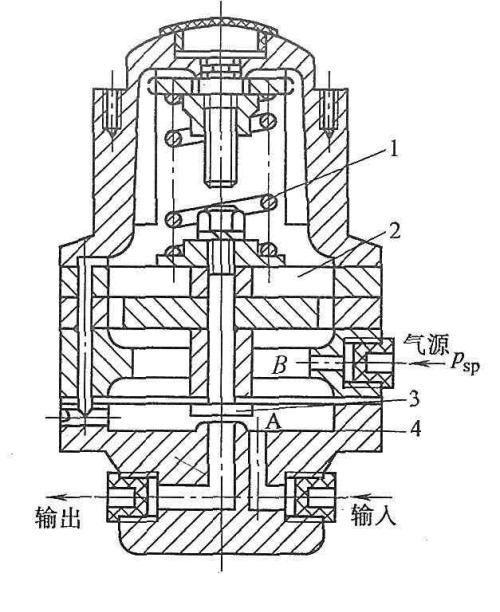Pneumatic locking valve, also known as pneumatic retaining valve, is that when the air signal is lost, the retaining valve is closed, and the pressure in the actuator cannot be discharged, and the actuator retains the function. Locking valves are divided into single-air circuit and dual-air circuit. A double-air circuit locking valve can directly control a double-acting actuator, while a single-air circuit locking valve requires two to control a double-acting actuator.
1) Principle
When the air source signal enters the air chamber B, the force acting on the comparison component 2 is compared with the force of the spring 1. When the acting force is greater than the given spring force, the plate valve core 3 is lifted at this time, the nozzle 4 is opened, and the channel is in a normal working state. When the air source fails and the air supply is interrupted, the pressure of the air chamber B drops. Under the action of the spring force, the plate valve core 3 covers the nozzle, cutting off the passage between the air chamber A and the output port, that is, the pneumatic actuator The air chamber is sealed.

Schematic diagram of lock valve
2) Advantages and disadvantages
Pneumatic pressure can be adjusted, generally set between 2-6Bar; the flow capacity is small, in order to increase its flow capacity during fast switching, it is necessary to connect multiple retaining valves in parallel in a pipeline.
3) How to choose correctly
Before using the pneumatic locking valve, the starting pressure should be set according to the pressure required by the actuator. When the setting is too high, the locking valve cannot be opened. When the setting is too low, the response speed will be slow, which will affect the effect of the actuator. If the solenoid valve is used to control the gas signal of the retaining valve, the function of power-off and gas-preserving can be realized. When using a latching valve, the number should be determined according to the switching time of the actuator.